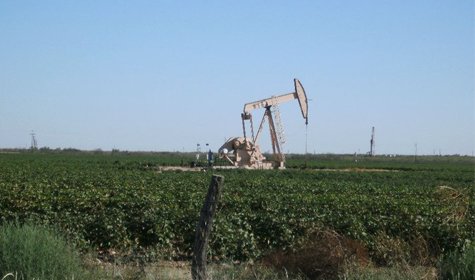Last week, the New York Times published an article titled, “A County Resents Oil Drilling, Despite the Money It Brings In.” The author featured Glasscock County, Texas and, in particular, cotton farmer Dennis Seidenberger. The article did an excellent job at highlighting the hardships facing surface owners, who do not own any portion of the mineral estate underlying their land, in Texas.
Under Texas law, ownership of the surface of the land and the minerals underlying the land may be severed. This means that oftentimes, one person owns the surface of the land and uses that land for farming or ranching, while another person owns the minerals underlying the property. Importantly, when this occurs, the mineral estate is considered dominant over the surface estate. This means that, absent an agreement to the contrary, the owner of the mineral estate–or the oil and gas company to whom the mineral owner leased the rights–has the automatic right, generally speaking, to use as much of the surface estate as is reasonably necessary to produce the minerals, without permission from or payment to the surface owner. For example, absent any contrary language in the lease or a surface use agreement, an oil and gas company leasing the mineral rights can place a drilling pad in the middle of a farmers field, has the right to construct roads, frack ponds, gathering lines, and even disposal wells. Further, because substances like caliche, gravel, sand, and groundwater are considered part of the surface estate–of which the mineral lessee has the right to use as much as is reasonably necessary–that means that an oil and gas company has the right to use these substances to produce the minerals underlying the land without consent or compensation to the surface owner.
This dominant mineral estate policy imposes a great, and often unexpected and unknown, burden on surface owners, despite the fact that they receive none of the benefits from the mineral lease, such as royalty payments or bonus payments.
As explained above, the general rule allowing a mineral owner the automatic right to use as much of the surface as is reasonably necessary applies absent an agreement between the parties modifying that rule. In order to protect themselves, surface owners should seek to negotiate contractual protections for themselves and their property with the mineral owner/lessee. If the surface owner also owns some portion of the minerals, he or she should ensure that terms related to protection of the surface be included in the oil and gas lease.
For surface owners who do not own any portion of the minerals–approximately 1/3 – 2/3 of all Texas farmers–the best thing to do is to seek a surface use agreement with the oil and gas company leasing the minerals. Although the companies are under no obligation to sign such an agreement in Texas, many times they are willing to do so in order to maintain good relations with the surface owners and avoid issues each time they enter the lease. The surface owner should seek as many protections as possible, including payment for damages to the surface estate, compensation for the construction of roads and drilling pads, and payment for the use of groundwater. As explained above, however, landowners are often not in a great bargaining position because, under Texas Law, there is no requirement that the company pay any such damages or compensation or enter into a surface use agreement.
What Terms Should Surface Owners Seek?
Surface owners negotiating with oil and gas companies, whether in the context of an oil and gas lease or a surface use agreement, should seek to ensure protection for their land and operation.
The following list is certainly not exhaustive, but it provides surface owners with some of the key terms to consider in negotiating a surface use agreement. I hope to complete a detailed checklist of terms to consider in the next few months.
- Compensation for damage to farmland/pasture land from roads, gathering lines, drill pads, etc.
- Identify certain locations (i.e. in a center pivot circle) where facilities (i.e. drilling pads, compressor stations) may not be placed.
- Require compensation for construction of roads, drilling pads, and other facilities.
- Identify specific points of ingress and egress to prevent employees from traversing all over the property.
- Set specific set-back distances prohibiting drilling of wells near existing structures.
- Require fencing around drilling equipment in order to keep livestock from access to poisonous substances.
- Require lining of all pits and ponds to prevent leakage or seepage.
- Require lessee to comply with all applicable laws, statutes, ordinances and regulations.
- Prohibit the drilling of disposal wells on the property.
- Prohibit employees from hunting, fishing, or any other recreational use of the property.
- Prohibit the free use of surface substances including groundwater, caliche, gravel, and sand; require consent by and payment to the surface owner.
- Limit the right to install pipelines to gathering lines for product from the lease, not larger transportation lines that may carry other product.
- Require restoration of land at the completion of drilling and at the completion of the lease.
Given the importance and complexity of these issues, I highly recommend that any landowner seeking to negotiate with an oil and gas company seek counsel from an experienced oil and gas attorney. Although attorneys can be expensive, it will save landowners a lot of headache, hassle, time, and money in the future if a legal dispute is avoided by a well-drafted agreement.







